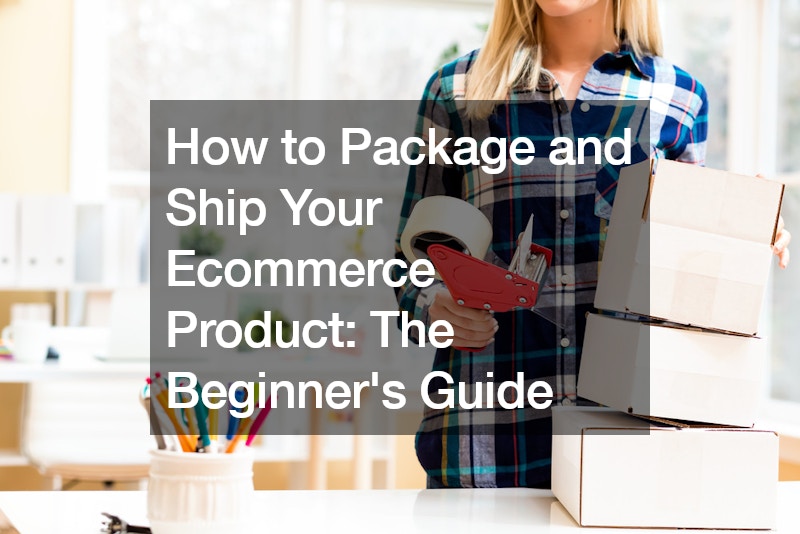In the world of ecommerce, packaging and shipping are not just logistical tasks; they are crucial components of the customer experience and can significantly impact the success of your business. Whether you’re just starting out or looking to optimize your existing processes, understanding how to package and ship your ecommerce products efficiently is essential. In this comprehensive guide, we’ll walk you through everything you need to know to get started.
1. Packaging Options
The first step in packaging your ecommerce products is choosing the right packaging materials. Depending on the nature of your products, you may need boxes, envelopes, padded mailers, or other specialized packaging.
If you’re shipping fragile items, it’s important to invest in protective padding like bubble wrap or packing peanuts to ensure that your products arrive safely.
When it comes to packaging materials, sustainability is also an important consideration. Many consumers today are environmentally conscious and prefer to support brands that use eco-friendly packaging. Consider using recycled materials or biodegradable options to minimize your environmental impact.
2. Customization and Branding
Packaging presents a unique opportunity to reinforce your brand identity and leave a lasting impression on your customers. Customizing your packaging with your logo, colors, and branding elements can help create a memorable unboxing experience and foster brand loyalty.
Additionally, including personalized touches like handwritten thank-you notes or promotional inserts can help build a stronger connection with your customers and encourage repeat purchases. Don’t underestimate the power of packaging as a marketing tool!
3. Shipping Strategies
Once your products are packaged, it’s time to choose the right shipping strategy for your business. There are several factors to consider when determining your shipping strategy, including the size and weight of your packages, your target audience, and your budget.
Free shipping is a popular option for many ecommerce businesses as it can help increase sales and customer satisfaction. However, it’s important to carefully consider the financial implications of offering free shipping and determine whether it makes sense for your business.
Alternatively, you may choose to offer flat-rate shipping or real-time carrier rates based on the weight and destination of your packages. Whichever option you choose, be transparent with your customers about shipping costs and delivery times to avoid any surprises at checkout.
4. Choosing the Right Carrier
Selecting the right shipping carrier is another crucial decision for ecommerce businesses. Consider factors such as pricing, reliability, delivery speed, and customer service when evaluating different carriers.
Popular shipping carriers for ecommerce businesses include USPS, UPS, FedEx, and DHL. Each carrier offers different services and pricing options, so it’s worth doing some research to find the best fit for your specific needs.
If you’re shipping internationally, make sure to choose a carrier that offers international shipping services and has experience navigating customs and import/export regulations. Working with a reputable carrier can help ensure that your packages arrive safely and on time, no matter where they’re going.
5. Utilizing Shopify Shipping and Fulfillment Services
For ecommerce businesses operating on platforms like Shopify, there are additional tools and services available to streamline the shipping and fulfillment process. Shopify Shipping, for example, offers discounted shipping rates and integrated label printing, making it easier than ever to fulfill orders directly from your ecommerce store.
In addition to Shopify Shipping, many ecommerce platforms offer integration with third-party fulfillment services, also known as apparel fulfilment. These services can handle everything from warehousing and inventory management to picking, packing, and shipping orders on your behalf. While outsourcing fulfillment may come with additional costs, it can save you time and resources in the long run, allowing you to focus on growing your business.
Returns and Exchanges: Navigating Customer Satisfaction
Returns and exchanges are integral components of the ecommerce experience, playing a vital role in customer satisfaction and loyalty. Understanding how to effectively manage these processes can significantly impact your brand reputation and long-term success. Here’s a comprehensive guide to handling returns and exchanges for your ecommerce business:
Clear Policies and Procedures: Start by establishing clear and concise return and exchange policies that outline the terms and conditions for customers. Clearly communicate factors such as the timeframe for returns, condition requirements, and any associated fees or restocking charges. Having transparent policies helps manage customer expectations and reduces misunderstandings.
User-Friendly Processes: Streamline the returns and exchanges process to make it as convenient and user-friendly as possible for customers. Provide multiple channels for initiating returns, such as online forms, email, or phone support. Consider offering prepaid return labels to simplify the return shipping process for customers and encourage them to choose your brand again in the future.
Efficient Handling: Once a return or exchange request is initiated, prioritize prompt and efficient handling. Have a dedicated team or system in place to process returns swiftly, inspecting products for damage or defects, and issuing refunds or replacements promptly. The goal is to minimize the time between the customer’s request and resolution to maintain their satisfaction.
Quality Assurance: Implement robust quality assurance measures to minimize the occurrence of returns and exchanges due to product defects or inaccuracies. Conduct regular inspections of inventory to ensure that products meet quality standards before they are shipped to customers. Investing in quality control upfront can help reduce the frequency of returns and exchanges over time.
Conclusion
Packaging and shipping are critical components of the ecommerce experience, impacting everything from customer satisfaction to brand perception. By understanding the fundamentals of packaging and shipping and implementing effective strategies, you can ensure that your ecommerce business runs smoothly and your customers receive their orders promptly and in pristine condition. Whether you’re shipping handmade crafts or high-end electronics, the principles outlined in this beginner’s guide apply to businesses of all sizes and industries.
.


